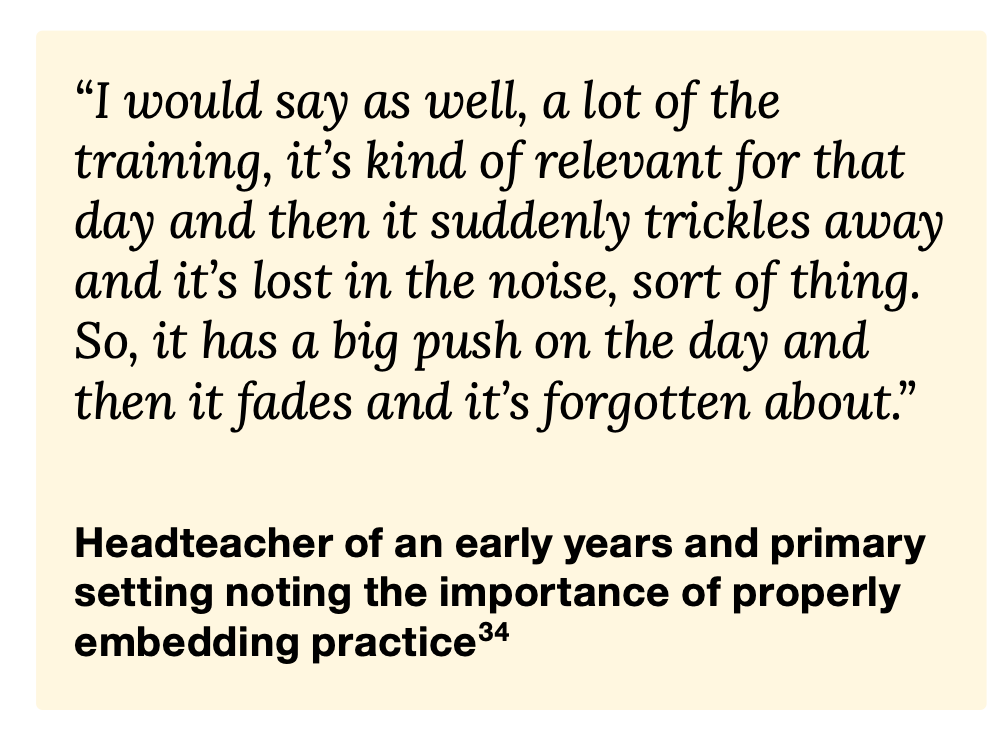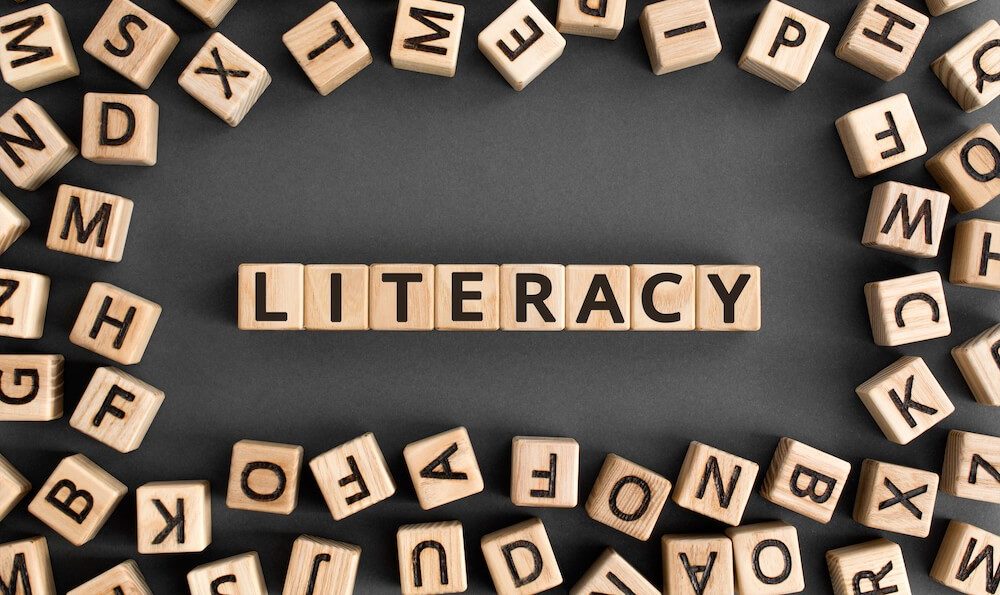This short blog series is targeted at literacy leaders – either Literacy Coordinators, Reading Leads, or Curriculum Deputies – with a key role in leading literacy to ensure that pupils access the curriculum and succeed in meeting the academic demands of school.
Picture the scene: it is the first school day of the new year and staff are shuffling in their seats. In the absence of their pupils, teachers eagerly await the opportunity to get back to their classroom or office to plan their upcoming week.
Amidst the chatter, the literacy lead stands up, shaking off the new-school-year nerves. They have an entire fifteen minutes to re-inspire and re-instigate important approaches to whole school reading.
What are their chances of success?
Professional development and developing literacy
Schools have lots of competing priorities for improvement. Teaching approaches, assessment, and curriculum development, all understandably receive most of the current bandwidth of precious professional development time.
Literacy can sometimes proves to be the topic ‘we do already’, lacking the novelty value to grab attention. It is unsurprising then that literacy, if perceived as a bolt-on to ‘covering the curriculum’, gains the professional development slots that are decidedly after the Lord Mayor’s Show.
Any leader of literacy therefore needs to ensure that they convince colleagues that literacy is not an add-on, but is in the fact the access point to the taught curriculum. If the case can be well made that literacy should be the focus of school improvement, then a proposal to develop literacy is almost guaranteed to require some high-quality professional development for teachers.
The recent EEF guidance report on ‘Effective Professional Development’ offers a helpful starting point to consider the ‘how’ for a well-structured and sustained approach to literacy professional development.
There are so many potential places to start when it comes to literacy priorities. You could pick from a plethora of purposeful starting points: developing pupils’ vocabulary; enhancing pupils’ reading fluency; cohering a reading rich curriculum; improving pupils’ extended writing; teaching pupils how to write in a formal academic style; introducing ‘disciplinary literacy’; a renewed focus on implementing phonics; supporting high need pupils who struggle with reading; and much more. [See this blog for helpful sources and resources for literacy priorities]
First, it is vital when leading literacy to shrink the challenge. You can identify one priority, before considering a suitable sequence. For instance, if you wanted to improve reading across the span of a school year in secondary school, you might want to sequence it to ‘understanding reading challenges’ > ‘reading fluency’ > ‘reading and background knowledge’ > ‘reading strategies’ etc.
The guidance is helpful in that it helps literacy leaders to think hard about the ‘mechanisms’ (that is to say, the core building blocks of professional development). It presents an accessible ‘balanced design’ that offers a scaffold for structuring PD:

Let’s explore each of the four areas of the ‘balanced design’ model with a focus on literacy and reading development.
A balanced design for literacy PD
A: Build knowledge (reduce cognitive load; revisit prior learning)
A helpful way to reduce cognitive load when it comes to understanding reading comprehension and reading barriers is to begin with an understandable model, such as the Simple View of Reading. A further example is to select multiple examples of curriculum texts, to reflect closely upon their respective difficulty, barriers and support factors.
When it comes to revisit prior learning, we can too easily ignore that teachers need helpful reminders of previous PD sessions. We use cumulative quizzes for teaching pupils, but these approaches can be just as useful for professional adults.
Revisiting prior learning is of course much easier if the sequence for the PD sessions of the year have been considered beforehand. Though difficult, it is likely the last session of the year needs to be clearly outlined before the first session is undertaken. In short, teacher PD across a year should be as considered and connected as a skilful curriculum plan.
B: Motivate staff (set & agree goals; use credible sources; affirmation & reinforcement)
We can be motivated to address literacy in their classroom, with the best intentions, but then school happens, and we defer to our habits. Decisions that attend reading can impact on fifty different teaching practices, so it can also blur and without clear goals we change very little.
It is not enough to have a really interesting PD session. Like any human, we need affirmation, nudges, reminders, and supports if we are to sustain a new habit or two. For instance, we may film pupils discussing what reading approaches have proven effective for them and how their increased fluency has made the curriculum more accessible.
C: Develop teaching techniques (perform techniques; practical support e.g. coaching; feedback; rehearsal opportunities)
I have been guilty in the past of doing training on a complex concept, but not spending enough time sharing and encouraging practise of apt teaching techniques that solve real classroom problems (that are sensitive to subject and even phase differences). Theory and interesting insights into models like ‘cognitive load’ will not be enough. Teachers need concrete practical approaches, along with some time to practice and rehearse them out of the white heat of the classroom.
When it comes to reading, there are countless ways to mediate tricky curriculum reading. As such you may narrow it down a PD focus to four strategies for developing reading fluency (see this excellent blog by Sarah Green on reading fluency). Rehearsing them in the training session itself is likely necessary. Helpfully, teachers and TAs can grapple with reading fluency if we practise with some unfamiliar foreign language or similar.
D: Embed Practice (prompts & cues; prompting action planning; self-monitoring; prompts for context-specific repetition)
Perhaps the hardest trick of all when it comes to literacy professional development – or on any topic or subject – is to sustain the habits and practices that were shared in training.
Too few PD structures offer supporting prompts to embed manageable and meaningful reflection when it comes to literacy practices. Maybe it is reciprocal teacher observations of parts of lessons, or the sharing of short videos of practice. Too little time is of course a barrier, which is why any PD programme needs to bake in these mechanisms and privilege them as much as any preparation for a new year PD session with all staff present.

Read the series:
Part 1: ‘Leading Literacy… And Perennial Problems’
Part 2: Leading Literacy…And Influencing Teachers
Part 3: Leading Literacy…And Purposeful Professional Development
Part 4: Leading Literacy…And Communicating Complexity
Part 5: Leading Literact…And Evaluating Impact
